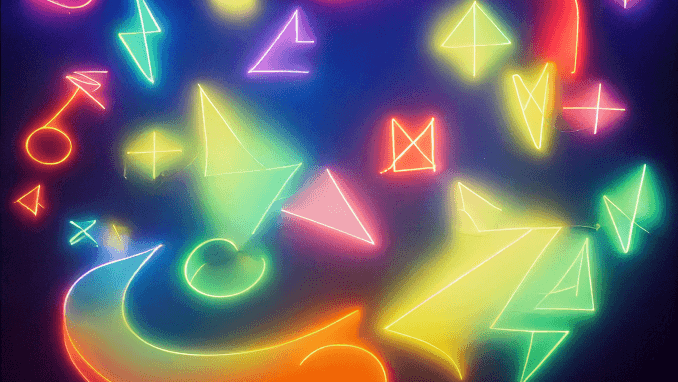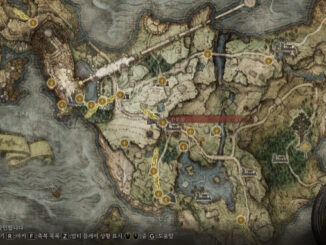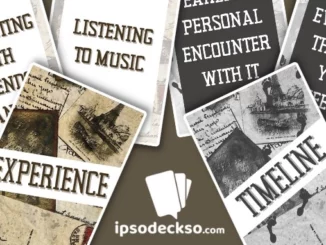
“If you want enough creative people, give them enough time to play!” —John Cleese
This is a famous quote by a prolific writer, actor, co-founder of the renowned comic group Monty Python and co-creator of the television show, Fawlty Towers (which has won multiple BAFTAs). Undoubtedly, his credentials as a creative person are second to none, so we can safely assume there must be at least a modicum of truth in his statement above. Then, arises the question, what exactly does he mean by developing creativity by giving people “enough time to play”?
Does creativity emanate from regular acts of unstructured tinkering and gambolling or is it entirely upon the participant to decide how, when and why they want to develop their creative repertoire? Is creativity an epiphany arising from small, insignificant actions that simply behave as a means to the end? Or, is it a gradual realisation that discretionary choices over time help arrive at an unforeseen but satisfying outcome?
Let’s start by understanding the concept of creativity itself. The term creativity, in its current connotation, is fairly nascent, coming into effect around the late 1800s. Till then, the way in which civilizations and societies have viewed and defined creativity has differed considerably. The act of creation only meant instantaneous existence out of absolute nothingness hence what we now recognise as the creative arts, like poetry or painting, was essentially craft. Anthropologists have however divided creativity into two major categories – aesthetic and functional (Cropley 2019). Aesthetic creativity is anything that appeals to the senses like painting, drawings, sculpture, jewellery, poetry or music but lacking purpose on a daily basis. Functional creativity is anything that is life-preserving or life-enhancing like tools, technology or machinery but not possessing much emotional value. Since prehistoric times the progress of mankind has been a direct result of the confluence of both these forms of creativity. This has been best encapsulated in the words of Puccio, “The survival and expansion of the human species is essentially a story of creativity.” (Puccio n.d.)
Interestingly, the entire story about soaring creativity also has a very down-to-earth corollary: which is that creativity does not come in a vacuum (Srinivasan 2018). It is born out of necessity, a quest for efficiency or, having overcome the low-levels of Maslowian needs, while seeking self-actualisation. This is perhaps what Cleese was referring to when he correlated creativity with play – give a participant enough time to express themselves in a manner of their choosing and they will produce results beyond the ordinary.

“Invention, it must be humbly admitted, does not consist in creating out of void but out of chaos.”
—Mary Shelley
Creativity, in any form or design, is often viewed as something mystical, which cannot be conformed to methodology or be ameliorated through process. However, research is slowly debunking this myth (Bono 1970). Creativity isn’t limited to innovation or novelty and, in fact, it is extremely rare to find something man-made that hasn’t taken inspiration from other elements, natural or otherwise. Hence, every creative act is either an idea borrowed from elsewhere or an assemblage of extant (or obsolete) concepts, repurposed in a new garb. Most creative people themselves think of creativity as a connection of the dots to see something that was hidden rather than a eureka moment where novelty appears out of absolutely nothing.
So, it is safe to surmise that the creative process involves four crucial stages – observation, incubation, linkage and persistence. A creative mind constantly observes their surroundings, compiles these thoughts and ideas and keeps them away safely in their memory. Allowing these ideas to incubate and being able to link these old elements into new combinations is essentially the story of every great idea. Most creative people also affirm that creative thoughts tend to strike when the mind is relaxed—during that state we called rest (Andreasen 2014).[1] Last, the birth of the idea itself isn’t the end of the creative process but merely the start. To believe in its potential, being able to visualise its outcome and nurture it into fruition even when confronted with scepticism or rejection is the hallmark of creativity. The culmination of this act of perseverance would, of course, arouse an emotional response (aesthetic creativity) or improve efficiency and efficacy (functional creativity) or, in rare, incredible instances, both!
This is best summarised by Nancy Andreasen in her article about the secrets of the creative brain – “Although we have a definition of creativity that many people accept—the ability to produce something that is novel or original and useful or adaptive—achieving that something is part of a complex process…for example, Newton developed the concept of gravity around 1666, when an apple fell on his head while he was meditating under an apple tree. […] Newton’s formulation of the concept of gravity took more than 20 years and included multiple components: preparation, inspiration and production. Many forms of creativity, from writing a novel to discovering the structure of DNA, require this kind of ongoing, iterative process.” (Andreasen 2014)
“The creative person is willing to live with ambiguity. He doesn’t need problems solved immediately and can afford to wait for the right ideas.” —Abe Tannenbaum

Game design is one of the domains where functional and aesthetic creativity converge. The results, when perfected, lead to the creation of ideas that are imbibed into our way of life, transcending borders, culture and tradition. Chess, Go, Backgammon, Pachisi are examples of games that have included creativity in the mechanics to give the player an unheralded experience and hence, have stood the test of time. Chess, in particular, has creativity in abundance. Not only is it a game of pure skill but one designed, at least in its initial purpose, for the sake of learning and simulation. In addition, it provides the players with sufficient creativity in tactics without limiting their options or strategy. One would argue its functional creativity greatly outweighs its aesthetic creativity but it remains, nonetheless, a marquee in creative design.
As a designer in the realm of tabletop games, my references and choices tend to veer toward the physical than the digital[2]. In recent times, an amalgamation of lifestyle, technology and globalization have ushered in a new age of creativity in tabletop game-design. It involves compelling narratives, vivid themes, unique mechanics and the use of cutting-edge technology to design game components with high aesthetic and functional value. In addition to the design itself, games now allow players to express their own creativity, challenging them to push their imagination and apply strategies as long as they stay within certain game thresholds. Perhaps the greatest examples are Tabletop Role Playing Games (TTRPGs)[3] where players have the creative freedom to build characters and describe their actions through narrations. These actions are deemed to succeed or fail by a formal set of guidelines which then shape the eventual outcome of the game. An authority or moderator, called the Game Master (GM), has a final say on the occurrences in this fictional world and often sets challenges in advance for players to overcome. (Kim 2008) The beauty about TTRPGs is that the entire game is a manifestation of the collective imagination of players. The scope for creativity is immense thus providing for an immersive experience during each gameplay, which itself could last for hours and even days!

Three games, in my opinion, that set the benchmark for stimulating creativity are Magic the Gathering (MTG), The Crew: Quest for Planet Nine and Cascadia. Magic the Gathering, a collectible card game in the ilk of Dungeons & Dragons visually but differing greatly from TTRPGs with tighter structure and complex rules, allows players to build their own custom deck cards (deck construction) or a library. While doing so, however, players must evaluate the powers of the cards, the possible interactions between them and then strategize on which to play. The permutations while building decks, introduction of new cards through booster packs, trading cards with other players all bolster the player’s chances of victory but the limitations enforced by the game rules also leave them in a dilemma, challenging them to be at their creative best throughout. The Crew: Quest for Planet Nine is a trick taking card game with an intriguing premise and gameplay. Here players cooperate to complete missions by dropping cards from their hands and aiming to win tricks each round. There is one gargantuan constraint which brings out the best in every player – they cannot communicate with each other. Now, players are challenged to take cues from their fellow crew members’ actions and must work cohesively to complete the mission at hand. One blip and everyone loses, forcing the crew to start again. As missions are completed the trials get tougher, elevating players to their creative zenith! Last, Cascadia is my personal favourite for its spectacular balance in aesthetic and functional creativity. As players build their personal maps of the cascades, the landscape of the pacific northwest, they are forced to balance their strategy from an analytical and visual perspective. The tiles players add to their maps have different features of the landscape and connected patterns fetch greater points at the end of the game. However, players must also add fauna to their maps which interact with each other and have an end-game scoring of their own. The limitations arise when picking tiles where a landscape feature and fauna must be picked together from only four options available each round. The victorious player often is one who has been creative in maximising opportunities presented during a turn while balancing the complex strategy of pattern building with multiplicity of scoring fauna.
“When learning is purposeful, creativity blossoms. When creativity blossoms, thinking emanates. When thinking emanates, knowledge is fully lit.” —A.P.J. Abdul Kalam
As a game designer, my forte lies in designing educational and family games that help learners improve academic and life skills. For long I have challenged myself to get players to engage with my games and acquire knowledge subliminally. Tell players, especially young kids, they’re here to learn and they instantly lose motivation to game. Tell them a story instead or to play a game and their instantly eyes glisten in excitement. Once they’re intrigued they will commit to performing game actions as the motivation to enjoy and/or prove themselves drives them to engage in learning without even realising it. With two of my games, Guess the Fence and Trail Blazers, my team and I explored the possibility of improving creative thinking in players along with a myriad of other skills. Guess the Fence, is my ode to Battleship, a game I loved as a kid. Players compete by building simple geometric shapes on their respective maps which are hidden to the other. During the course of the game, they’re challenged to imagine and visualise where their opponents have made these shapes using limited information that builds as the game progresses and geometric properties of the shapes. The goal is to get them to not only creatively build their maps but also occasionally close their eyes and imagine what the difference between a square, rectangle or triangle is and the many ways they could be oriented. Trail Blazers, on the other hand, combines memory with accuracy and pushing your luck. Players see a common map with certain points and obstacles and are challenged to creatively analyse how they can maximise reward and minimise damage. Then, out of memory, they draw a path on a transparent sheet which is later placed on the map to see how they scored. Their creativity blossoms when they figure out how there are multiple answers to a problem but not all solutions are equal. Often greater risk means greater reward but get it wrong and it could spell doom!
Some of the greatest challenges in design are not to generate ideas but to find the ones that are worth keeping. Success, for the designer, means having identified and refined a promising idea for the receiver (learner, player, viewer or user) and for it to act as a platform for them to express or evaluate their own creativity. In my opinion, we are all inherently creative, armed with fecundity of imagination but we simply do not pause, perceive and attempt to make the necessary associations. Creativity, therefore, maybe simply seeing connections in things that others may not.
So, as a conclusion, I ask you this – do creative people simply have more ideas or have a greater collection of experiences? Does creativity emanate from a quantitative cesspool or from a qualitative one? Some food for thought!

[1] Andreasen in her extensive studies using cutting edge neuroscience interviewed some of the greatest creative minds. An artist in her study told her, “A lot of it happens when you are doing one thing and you’re not thinking about what your mind is doing. I’m either watching television, I’m reading a book, and I make a connection … It may have nothing to do with what I am doing, but somehow or other you see something or hear something or do something, and it pops that connection together.”
[2] Having said that, as a player, games such as Command & Conquer, Age of Empires and other strategy games were essential in my creative growth during my early years. However, as a designer my thought process and references revolve around tabletop games. Any game that I play often gets me thinking – what did the designer think while doing this? Or what is the motivation to design this? Sometimes, I remain awestruck at the player experience and the thoughtful design woven into the game! This remains whether the arena is physical or digital games.
[3] The most popular amongst TTRPGs is undoubtedly Dungeons & Dragons which has a burgeoning global cult following owing to regular references across media. However, there is an entire universe of TTRPGs in multiple languages and formats, ideal for beginners to experts. An entire encyclopaedia can be viewed here.
References and Further Reading
Puccio, G.J. n.d. “From the dawn of humanity to the 21st Century: Creativity as an enduring survival skill.” The Journal of Creative Behavior 330-334.
Cropley, Arthur. 2019. Ancient World Conceptulizations of Creativity.
Srinivasan, Rajeev. 2018. “A Long, Forgotten History Of India As One Of The Most Creative Civilisations That Ever Existed.” Swarajya Magazine, July 1.
Bono, E. de. 1970. Lateral Thinking. Creativity Step by Step. New York: Harper and Row.
Andreasen, Nancy C. 2014. “SECRETS OF THE CREATIVE BRAIN.” The Atlantic, July.
Kim, John. 2008. DarkShire. august 29. https://web.archive.org/web/20080829174633/http://www.darkshire.net/~jhkim/rpg/whatis/tabletop.html.
- Creativity – Eureka Moment or Piecemeal Awakening? - 17th November 2022





Be the first to comment